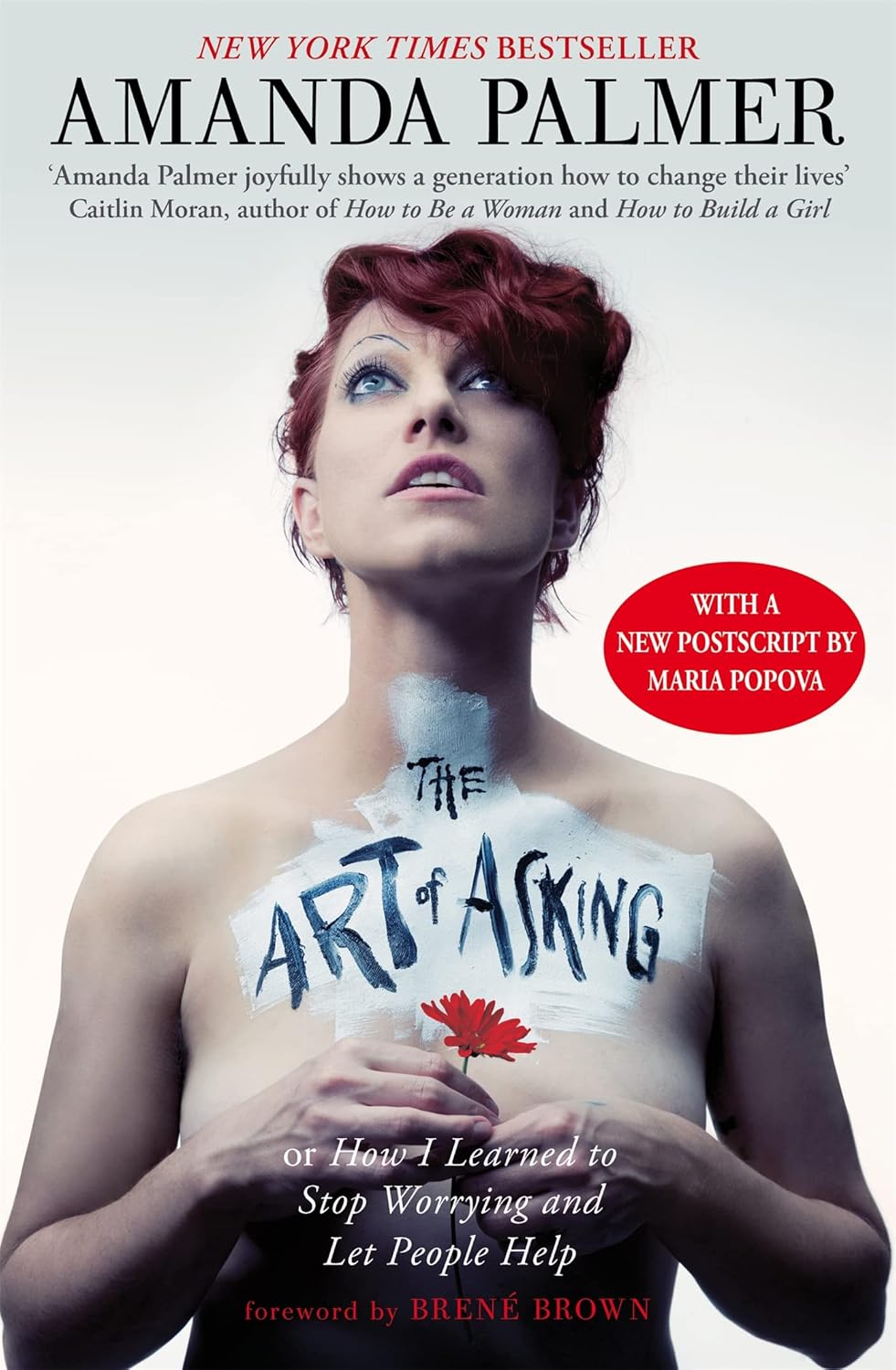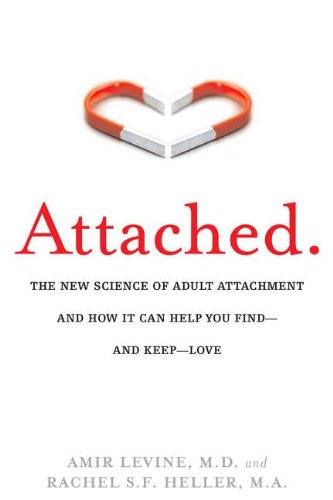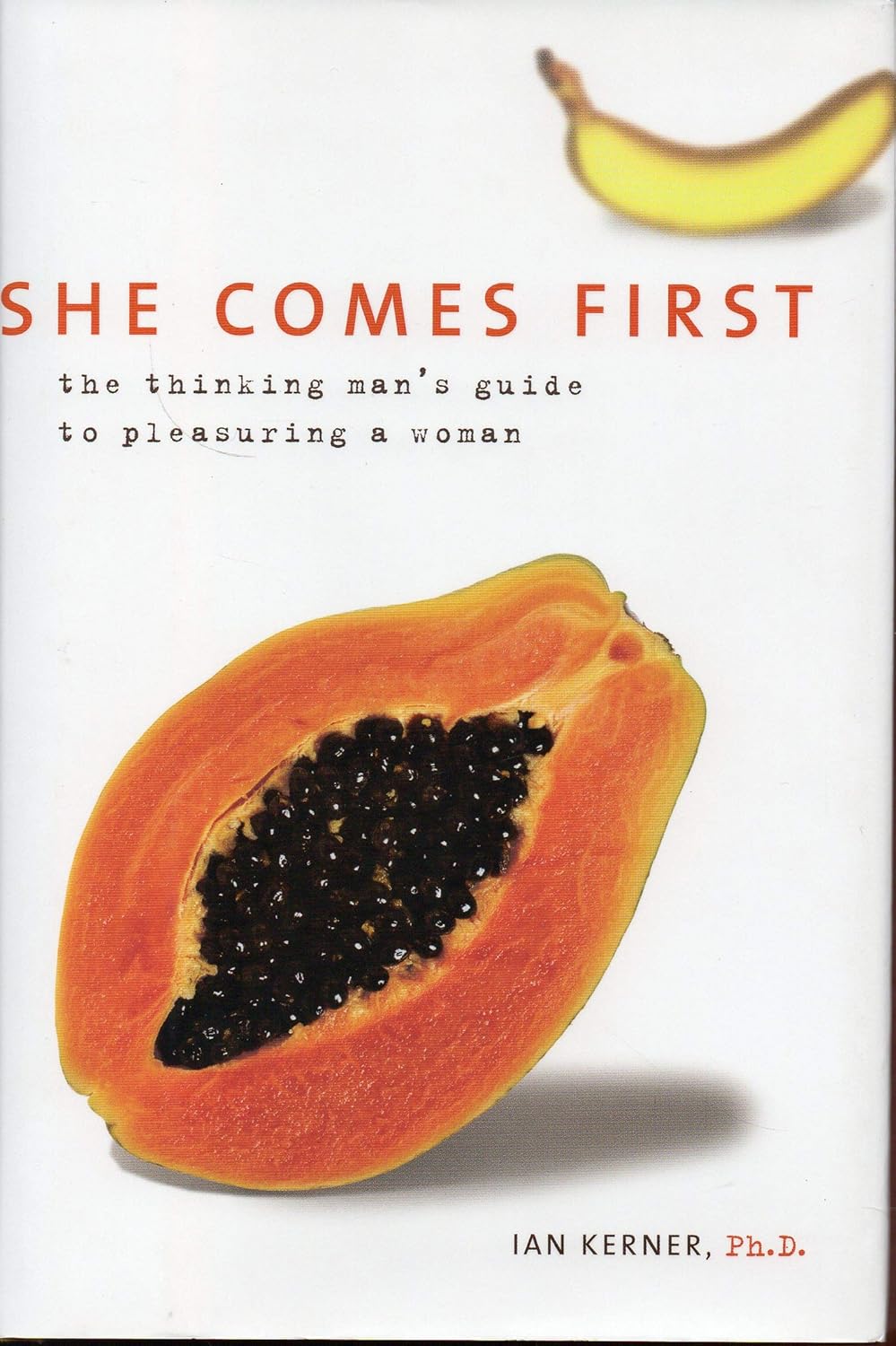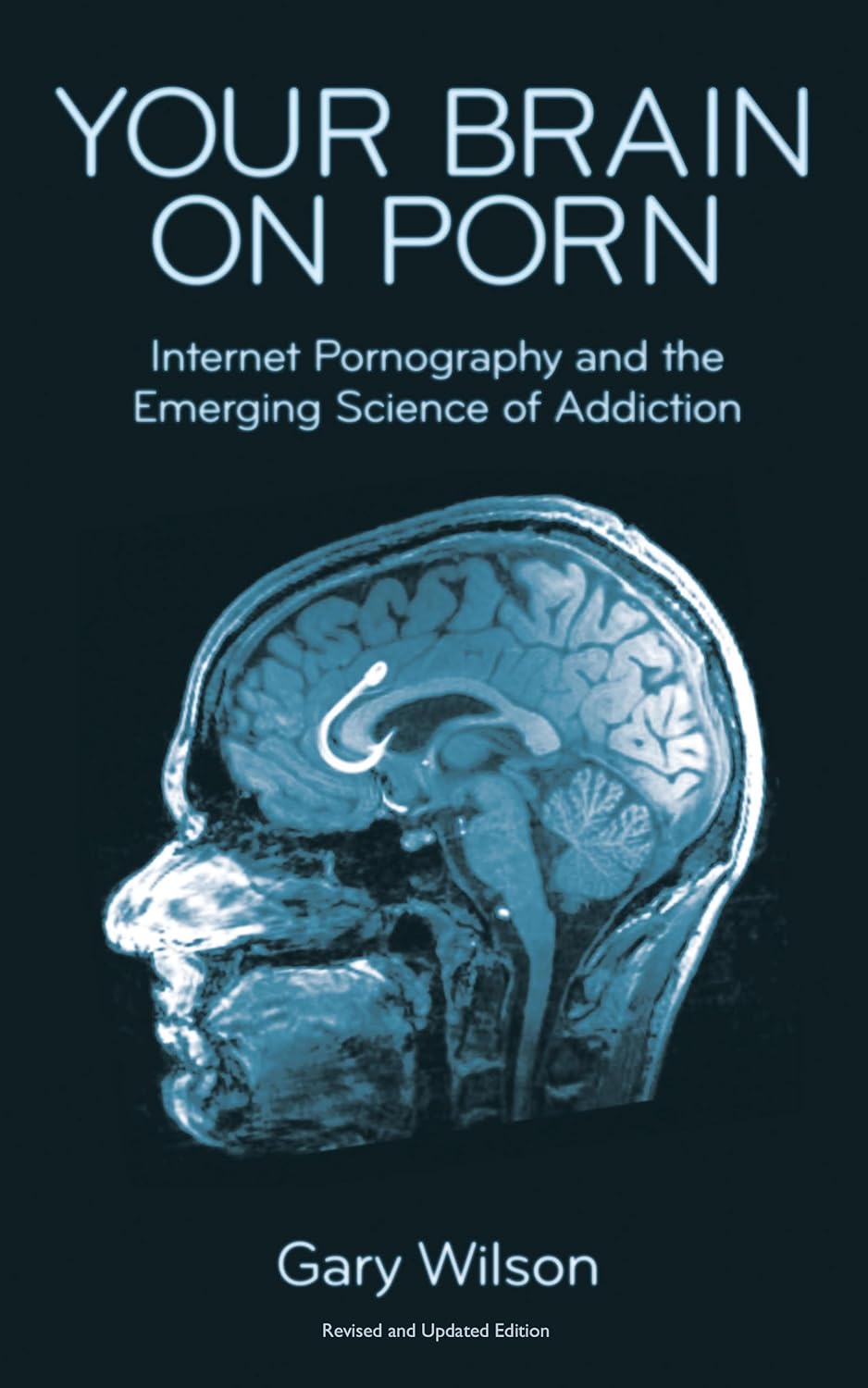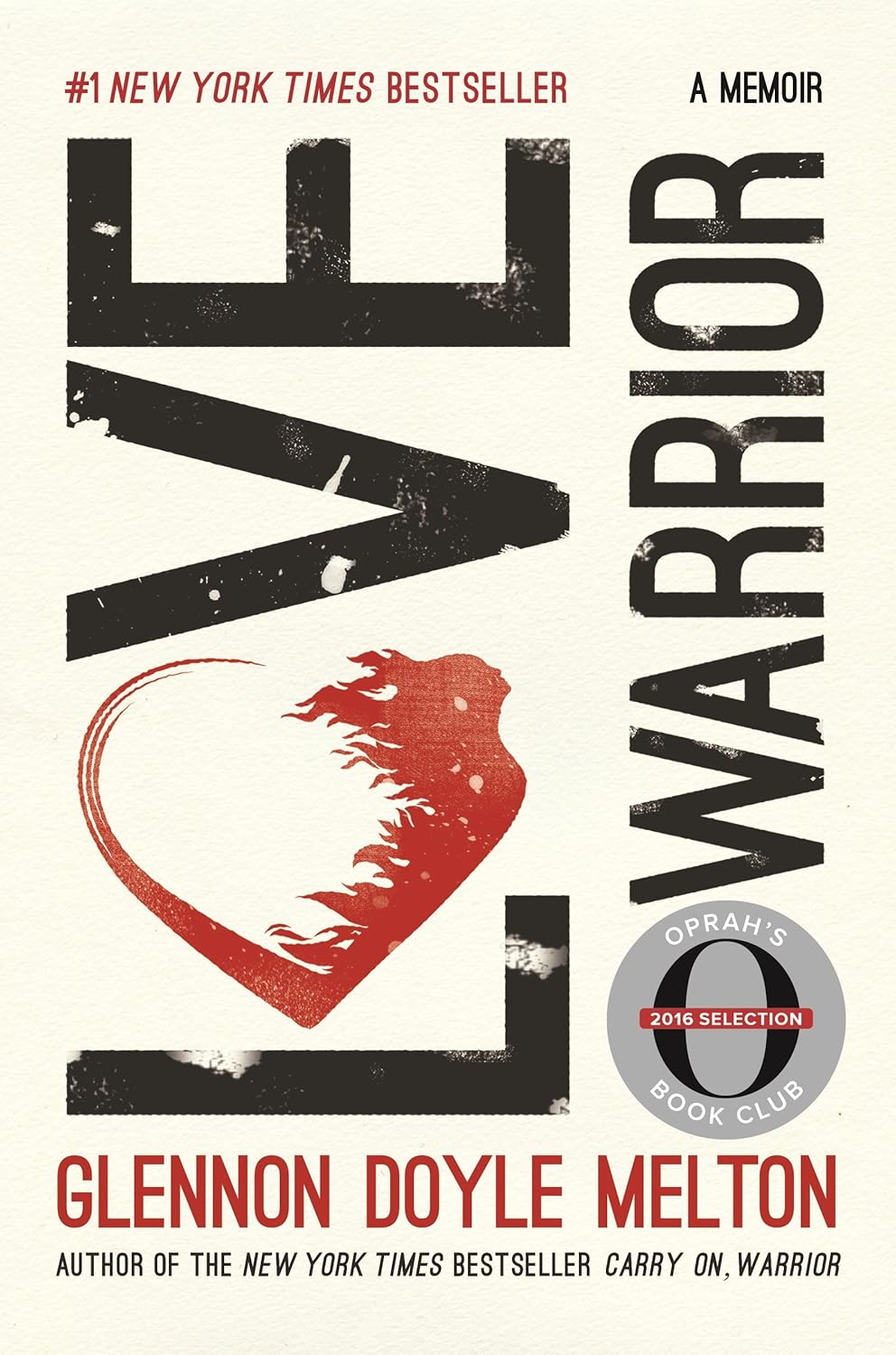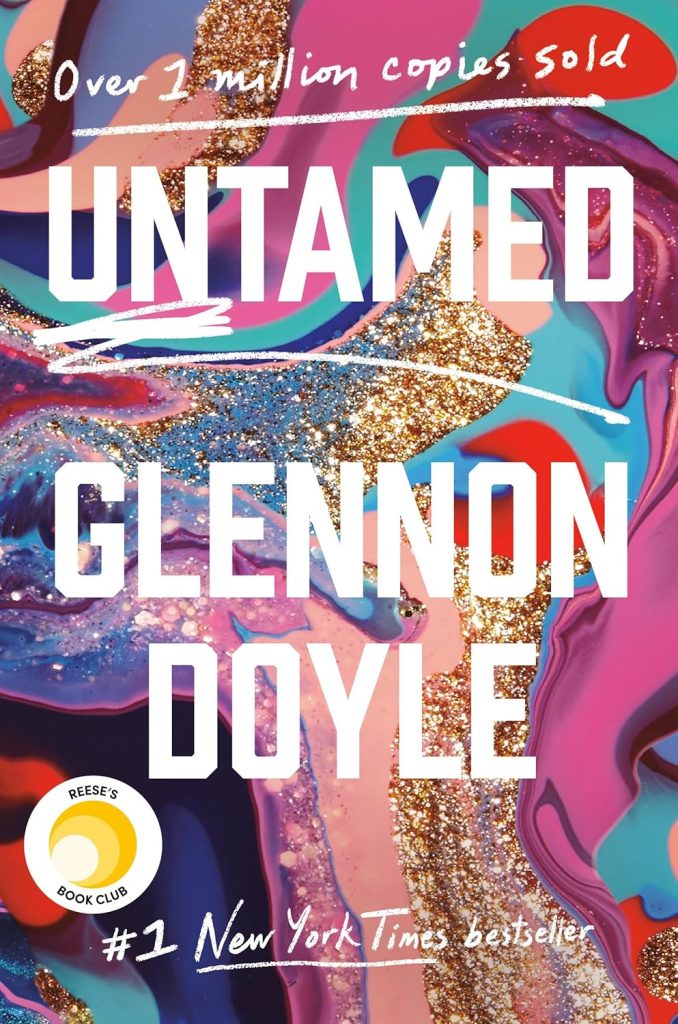
Buy The Book
Untamed

About
Glennon Doyle, author and activist, challenges women to break free from societal expectations and embrace their authentic selves in “Untamed.” Part memoir, part manifesto, it chronicles Doyle’s personal journey of self-discovery, culminating in her divorce and marriage to soccer star Abby Wambach. The book urges readers to question ingrained beliefs about womanhood, marriage, motherhood, and faith, encouraging them to trust their inner voice and pursue their true desires. Doyle argues that women have been conditioned to be “good” rather than free, and that true liberation lies in honoring their instincts and intuition. “Untamed” is a call to reclaim personal power, prioritize self-love, and create lives built on genuine self-expression rather than external validation. It encourages women to be wild, brave, and unapologetically themselves.

Spark
Learn
Review
✦ Part One: Caged (Spark – Arms)
Life often feels like being trapped in a cage built by external expectations and societal norms. The cage is made of rules about what to want, how to act, and who to be. These rules are so deeply ingrained that they shape actions and thoughts without question. They teach that complying with these standards will bring love, belonging, and safety, but instead, they create a disconnect from what is real and true within.
There is a spark inside, a quiet yet undeniable voice that knows what is right and authentic. This spark tells the truth about what brings joy, meaning, and freedom. Yet, instead of listening to it, the world conditions people to silence it. Ignoring this spark leads to a life that feels unfulfilled, heavy, and controlled by what others expect. The spark doesn’t disappear, though—it waits patiently, urging to be noticed and trusted again.
Breaking free from the cage begins with recognizing its existence. Recognizing how much of life has been lived trying to meet others’ expectations is uncomfortable but necessary. The spark provides the courage to question everything that feels like a trap, everything that demands compliance at the expense of authenticity. This process involves unlearning the stories and lies that have dictated choices, shedding layers of conditioning, and rediscovering the truth beneath them.
The arms symbolize the strength and support needed to hold onto oneself during this process. They represent both the ability to nurture the self and the courage to carry through difficult moments of transformation. The journey toward freedom requires embracing the spark and trusting it to guide the way, even when doing so feels uncertain or risky. Trusting the spark means letting go of the need for external validation and learning to rely on inner wisdom.
Living untamed is not about becoming someone new; it is about returning to who one has always been. The spark holds the essence of individuality and authenticity, untouched by the world’s attempts to suppress it. Reclaiming this essence involves facing fears, making difficult decisions, and often disappointing others. It means standing firm in the truth of who you are, even when it challenges the roles and expectations imposed by society.
This process is not a single moment of liberation but an ongoing practice of listening to the spark and honoring it. The spark is not a fleeting feeling; it is a compass pointing toward joy and alignment. Following it means letting go of what no longer serves, even when it feels safe or familiar. It means trusting that joy is not selfish but essential, that living authentically is not indulgent but necessary.
The arms also reflect connection and support from others who are on similar journeys. While the work of breaking free is deeply personal, it doesn’t have to be done alone. Community and solidarity provide the encouragement and reassurance needed to keep moving forward, even when the path feels challenging. The arms of others help remind that no one is truly alone in their struggles or aspirations.
Compassion is vital throughout this process. It’s easy to fall into self-blame for the times when the spark was ignored or when the cage felt easier to stay in. But this journey isn’t about perfection; it’s about progress. Forgiving oneself for past choices and embracing the messiness of growth creates space for transformation. Each step toward freedom, no matter how small, is a step worth celebrating.
True freedom comes from living in alignment with the spark. It means prioritizing authenticity over approval, truth over conformity, and joy over obligation. Choosing to live untamed is a radical act of self-respect, one that allows life to be lived fully and without regret. This doesn’t mean life will be free of challenges, but it will be real, meaningful, and deeply fulfilling.
The cage shows up in countless ways—in relationships, careers, habits, and self-perceptions. Recognizing where life feels stifled or inauthentic is the first step toward breaking free. It requires asking hard questions: What feels like a cage? What beliefs, roles, or expectations are holding you back? What needs to be released to live in alignment with the spark? These questions often lead to uncomfortable truths, but they also lead to liberation.
Breaking free is an act of defiance against a world that thrives on control and conformity. It’s a declaration of independence, a refusal to shrink or mold yourself to fit into roles that don’t fit. It may mean letting go of relationships, identities, or habits that keep you confined. It may mean facing criticism, rejection, or misunderstanding. The journey won’t always be easy, but it will always be worth it.
Joy plays a vital role in guiding this journey. Joy isn’t just a fleeting emotion; it’s a signal that the spark is being honored. Following the spark often leads to greater joy, even if the path is uncertain or uncomfortable at times. Joy is not a distraction or luxury—it is a necessity for a life that feels true and free.
The arms also remind of the need to hold space for both light and darkness. Transformation is not a linear process. It involves moments of doubt, fear, and struggle alongside moments of clarity, courage, and triumph. The arms provide the strength to hold all of it, to carry yourself through the hard parts and celebrate the light that emerges.
Living untamed means committing to the spark, trusting its wisdom, and allowing it to lead. It means breaking through the cage and embracing the messiness, beauty, and freedom of authenticity. It’s not about becoming something new but about remembering who you are beneath the layers of conditioning. It’s about reclaiming a life that feels real, meaningful, and aligned with your deepest truths.
This journey begins with a simple but profound choice: to listen to the spark and trust it. The spark already holds the answers and the way forward. Trusting it means letting go of the need to control or predict the outcome and instead surrendering to the process of becoming. It means believing that the spark will always lead toward what is right, true, and joyful.
The spark cannot be extinguished, no matter how deeply it has been buried. It is always there, waiting to be noticed, trusted, and followed. Choosing to honor it is an act of self-love and liberation, one that has the power to transform not only your life but also the lives of those around you. Living untamed is a ripple effect, inspiring others to break free and embrace their own sparks.
This is the essence of freedom: living in alignment with the spark, trusting its guidance, and embracing the truth of who you are. It is a journey of rediscovery, a return to the self, and a reclamation of joy, authenticity, and meaning.
✦ Part Two: Keys (Feel – Let It Burn)
Life often teaches that feelings are something to be controlled, avoided, or minimized. From a young age, the world encourages numbing discomfort rather than sitting with it. Whether through food, work, relationships, or distractions, there’s always something available to anesthetize the ache. But the truth is, feelings are not obstacles to overcome—they are messengers, guides, and keys to the truest self. Ignoring or numbing them doesn’t make them disappear; it only buries them deeper, where they fester and create more pain.
To live fully and authentically means allowing feelings to surface instead of suppressing them. This involves unlearning the habit of avoidance and embracing the discomfort that comes with facing emotions head-on. Feelings, even the painful ones, are not the enemy. They are signals that point toward what is true and necessary. Anger, sadness, fear, and longing all hold meaning. They are invitations to pay attention, to ask questions, and to take action.
The world often sends the message that happiness is the goal, and anything that disrupts that happiness should be eradicated. But this belief leads to an endless chase for fleeting pleasures that mask deeper truths. True freedom comes from being willing to feel everything, to stop running from discomfort and start listening to what it has to say. Pain and joy are not opposites; they are both integral parts of a full life.
Feeling deeply requires courage because it means opening up to vulnerability. It means acknowledging wounds, fears, and unmet needs that have been ignored or suppressed for too long. It means risking heartbreak and disappointment in order to experience connection and meaning. The process of feeling is messy and unpredictable, but it is also transformative. It clears a path to the truth, showing what needs to be healed, released, or embraced.
Letting feelings come and go without resistance allows them to do their work. Pain, when honored and allowed to flow, burns away what is no longer needed. It clears space for clarity and growth. Holding onto pain, on the other hand, traps it inside, where it hardens into bitterness or despair. Letting it burn means trusting the process, trusting that on the other side of the fire lies freedom.
Control is often an illusion, a way of avoiding the uncertainty and messiness of life. Trying to control emotions, outcomes, or others only creates more resistance and suffering. Surrendering to the flow of life, including its pain and unpredictability, is the way forward. Surrender doesn’t mean giving up; it means letting go of the need to fight reality. It means choosing acceptance over resistance, trust over fear.
Burning away the old allows space for the new to emerge. This process requires a willingness to let go of what no longer serves, even if it feels familiar or comfortable. Letting it burn is an act of faith, a belief that the ashes will nourish new growth. It’s about releasing the stories, roles, and expectations that have been carried for too long and stepping into what is real and true.
Feelings also remind of the body’s wisdom. The body knows what the mind often ignores. It holds onto experiences, memories, and truths that can’t be rationalized or explained. Paying attention to the body’s signals—tightness, heaviness, lightness, warmth—offers insight into what is needed and what is right. The body never lies, and learning to trust its messages is a powerful step toward living authentically.
Allowing feelings does not mean being consumed by them. It means creating space for them to exist without judgment or fear. Feelings are not permanent; they come and go like waves. Trying to hold onto them or push them away only creates more suffering. Letting them move through allows them to teach their lessons and then pass.
Fire becomes a metaphor for transformation. Just as fire consumes and purifies, so too does the act of feeling deeply. The fire of pain, grief, or anger can feel overwhelming, but it also has the power to reveal what is true and essential. Avoiding the fire only prolongs the suffering, while stepping into it with courage allows for healing and renewal.
This process is not about perfection or always having the right answers. It’s about being willing to show up, to face what is uncomfortable, and to trust that growth comes from the willingness to feel. It’s about recognizing that feelings are not a sign of weakness but a source of strength. They are the keys to understanding oneself and navigating life with authenticity.
Letting go of control also means letting go of the need to please others. Living for others’ approval only creates a cage that stifles the truth. Authenticity requires disappointing others at times, choosing what is right over what is expected. This can be painful, but the pain of living a lie is far greater. Freedom comes from aligning actions with inner truth, even when it challenges the status quo.
The process of letting it burn also involves forgiveness—not just of others, but of oneself. Holding onto guilt, shame, or regret only feeds the fire of self-doubt. Forgiving oneself for past mistakes creates room for growth and allows the spark of self-love to reignite. Self-compassion is not indulgent; it’s essential for healing and transformation.
Feeling everything also means embracing joy fully when it comes. Joy is not something to be earned or deserved; it is a natural part of life. Allowing joy to flow without guilt or fear of losing it is as important as allowing pain to flow. Both joy and pain are part of the same continuum, and both are necessary for a life that feels whole and real.
Letting it burn is ultimately an act of trust—trust in oneself, in the process, and in the spark that guides the way. It’s about believing that even in the midst of pain or uncertainty, there is a path forward. The fire clears the way for what is true, leaving behind only what is real and necessary. This is the essence of transformation: facing the fire, feeling everything, and emerging freer and more grounded in truth.
This act of trust doesn’t require knowing all the answers or having a clear plan. It simply requires the willingness to take the next step, to feel the next feeling, to let the fire do its work. It’s about surrendering to the process and believing that the spark will always lead back to what is real and right.
Living untamed means reclaiming the ability to feel fully, to let life flow without resistance or control. It means trusting the body, the feelings, and the fire to guide the way. It means letting go of what no longer serves and stepping into the truth of who you are. This is not an easy journey, but it is a necessary one for a life that feels free, authentic, and whole.
The fire is not something to fear; it is something to embrace. It is the key to freedom, the way through pain, and the path to a life that feels real. Letting it burn clears the way for joy, connection, and truth to shine through. It is a radical act of self-love and self-liberation, one that transforms not just the individual but also the world.
Letting feelings flow is not a sign of weakness but of strength. It is the key to living untamed, to reclaiming the spark, and to embracing the fullness of life. The fire may feel overwhelming at times, but it is also the source of transformation, the way to freedom, and the path to the truest self.
✦ Part Three: Free (Acher – Levels)
Freedom begins with recognizing the aching truth that life as it is might not be enough. There’s a pull, a persistent discontent, that urges stepping outside the boundaries of what’s comfortable or expected. This ache is not a problem to fix or a flaw to hide; it’s a signal, a guide pointing toward something more expansive and true. The ache reveals where transformation is necessary, where the current version of life no longer fits.
The world teaches that contentment lies in staying within the limits of what is known and approved. But staying small and safe only leads to further longing. The ache will not disappear by ignoring it; it will only grow louder. Listening to it means trusting that the discomfort is a doorway to freedom. It’s a call to honor the self instead of continuing to perform roles that no longer resonate.
Answering the ache requires courage. It means facing the fear of stepping into the unknown, of breaking away from what others expect. The pursuit of freedom often disrupts the status quo, leading to resistance from those who benefit from conformity. But staying bound by others’ comfort zones only perpetuates the feeling of being trapped. The ache demands growth, even when that growth is uncomfortable or misunderstood.
There’s a difference between living for others and living for oneself. The world rewards compliance and punishes rebellion, but freedom comes from choosing authenticity over approval. Living freely requires letting go of the need to please everyone and embracing the reality that not everyone will understand or accept the choices made. This is not selfishness—it’s self-respect. It’s choosing to honor the spark within rather than sacrificing it for the sake of others.
Freedom also means redefining success. The world often measures worth by productivity, appearance, or approval. These external markers create a false sense of fulfillment that quickly fades. True success comes from living in alignment with inner values, from creating a life that feels meaningful and real. This kind of success cannot be measured by others because it is deeply personal and unique.
Living freely involves embracing complexity. Life is not black-and-white; it is full of nuance, contradictions, and layers. Freedom means holding space for all of it—the joy and the pain, the certainty and the doubt. It means allowing the self to evolve, to be messy and imperfect, without judgment. The ache for freedom is not a demand for perfection; it’s a call to live fully and honestly.
Breaking free often requires unlearning beliefs that no longer serve. These beliefs may have been inherited from family, culture, or society, but they are not permanent. Questioning them is not betrayal; it’s an act of love toward oneself. Letting go of outdated beliefs creates space for new truths to emerge, truths that align with the deeper, untamed self.
Boundaries become essential in this process. Freedom does not mean saying yes to everything or everyone; it means choosing what aligns with the truth. Boundaries protect the spark, ensuring that energy is not wasted on things that drain or diminish. Setting boundaries can feel uncomfortable at first, especially when others resist them, but they are a necessary act of self-care and self-preservation.
Freedom also means embracing vulnerability. Living authentically requires showing up fully, even when it feels risky. It means being honest about needs, desires, and fears instead of hiding behind a facade. Vulnerability is not weakness; it is strength. It creates deeper connections and allows for a life that feels real rather than performative.
The ache for freedom often reveals layers of conditioning that need to be peeled back. These layers may include roles, expectations, or habits that no longer serve but feel too familiar to release. Letting go of these layers is not easy, but it is essential for living untamed. Each layer shed brings closer alignment with the spark, closer alignment with the truth.
Freedom is not something that can be given by others—it must be claimed. It is an internal process, a decision to trust oneself above all else. This trust does not come naturally in a world that encourages doubt and compliance. It must be nurtured through practice, through small acts of courage that build confidence over time.
Living freely also requires embracing intuition. The spark within always knows what is right, even when the mind or the world argues otherwise. Trusting this intuition means listening to the body, the heart, and the inner voice rather than external noise. It means choosing the path that feels true, even when it defies logic or convention.
The ache for freedom often demands change—not just internal but external. It may mean leaving relationships, jobs, or environments that no longer align with the truth. These changes are not easy, but they are necessary for growth. Staying in situations that stifle the spark only perpetuates the ache. Freedom requires the courage to choose what is right, even when it is difficult.
Letting go of the old makes space for the new. Freedom is not about holding onto everything; it’s about releasing what no longer fits and trusting that what is meant to remain will stay. This process can feel like loss, but it is also liberation. Letting go creates room for joy, connection, and authenticity to take root.
Living untamed means embracing the fullness of life. It means feeling deeply, loving openly, and showing up completely. It means choosing truth over ease, freedom over comfort, and joy over obligation. This is not a one-time decision but an ongoing practice, a daily commitment to honor the spark and live in alignment with it.
The ache for freedom is a gift, a reminder that life is meant to be lived fully and authentically. It is not something to fear or resist; it is something to embrace. Answering the ache leads to a life that feels true, meaningful, and aligned with the deepest self.
This journey is not about perfection or certainty; it is about progress and trust. It is about showing up, even when it feels messy or uncertain. It is about choosing to live freely, to honor the spark, and to embrace the truth. Freedom is not a destination; it is a way of being, a way of living that honors the complexity, beauty, and depth of life.
The ache for freedom is a call to come home to oneself. It is an invitation to let go of what no longer serves and to step into what is real and true. It is a reminder that the spark within is always there, waiting to guide the way.
Living untamed means choosing freedom, choosing authenticity, and choosing the spark. It means trusting the process, even when it feels uncertain or uncomfortable. It means believing that the ache is not a problem but a path, a guide leading to a life that feels whole and real.
This is the essence of freedom: honoring the ache, trusting the spark, and stepping into the truth of who you are. It is not easy, but it is worth it. Freedom is not about escaping life; it is about embracing it fully, with all its beauty, messiness, and complexity. It is about living untamed, living free.
For People
– Women seeking self-discovery
– Individuals questioning societal norms
– Those navigating major life transitions
– People interested in feminist perspectives
– Anyone seeking greater authenticity
Learn to
– Enhanced self-awareness
– Increased personal empowerment
– Greater clarity of values
– Strengthened inner voice
– Fostered self-acceptance





